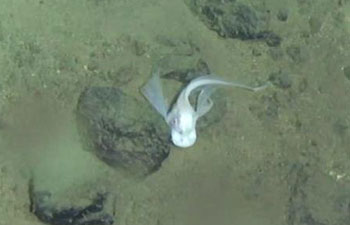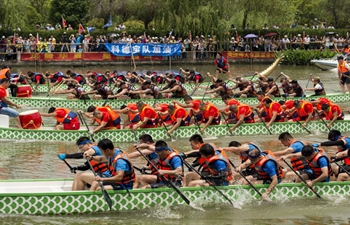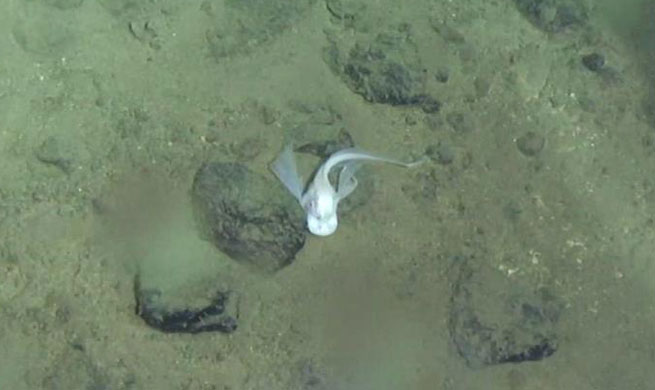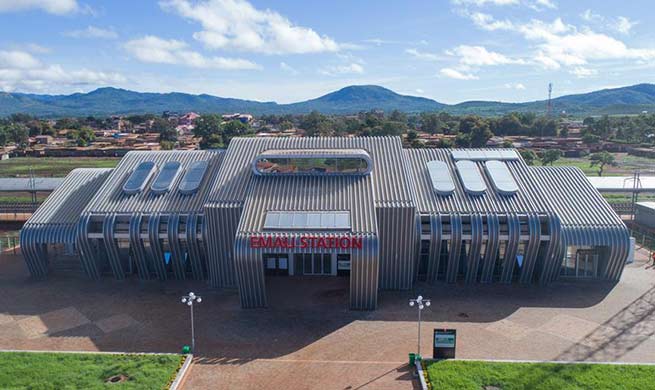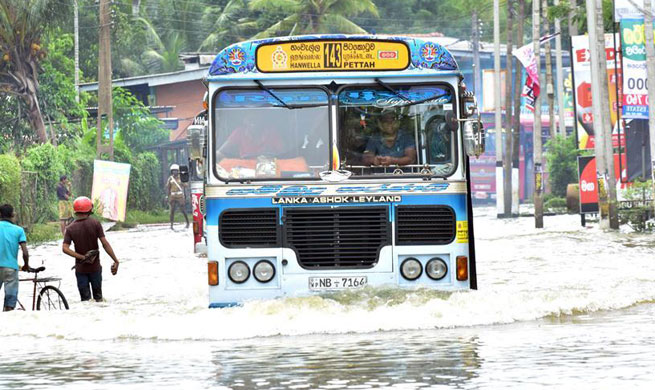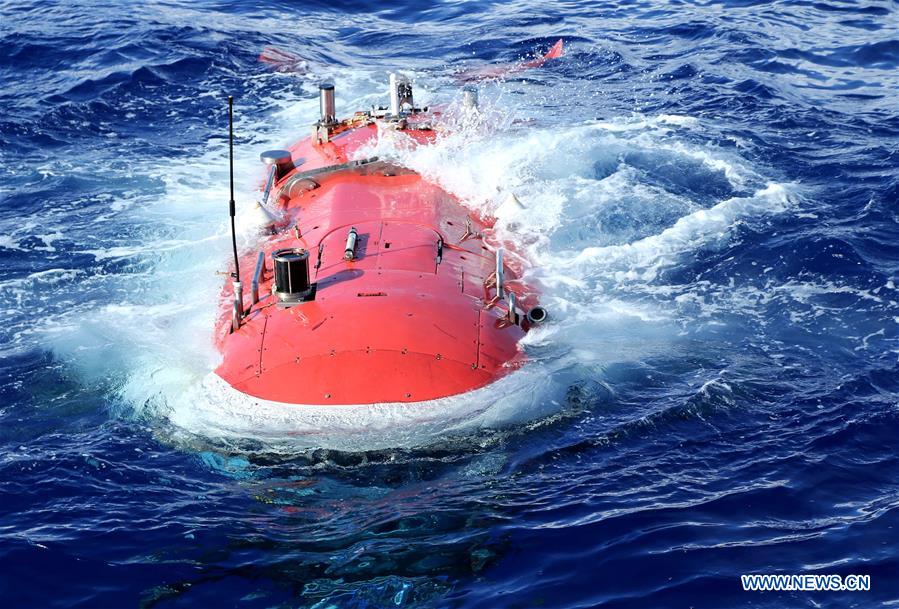
China's manned submersible Jiaolong surfaces after a dive in the Mariana Trench on May 30, 2017. Jiaolong dived to 6,699 meters during Tuesday's mission in the Mariana Trench. (Xinhua/Liu Shiping)
BEIJING, May 30 (Xinhua) -- On Tuesday China celebrated its first science and technology day, which means it has only been one year since the country declared its intention of becoming a leading power in S&T by the middle of the century.
Things have moved pretty swiftly since.
Jiaolong, China's manned submersible, went quite literally to the bottom of the ocean this week, diving three times into the Mariana Trench and reaching a depth of 6,544 meters on May 27. Scientists collected samples of seawater, rock and marine life, including sea cucumbers, sponges and starfish. The geological samples will help them understand how the trench was formed.
WHAT GOES DOWN, MUST GO UP
In pursuit of the kind of quantum scientific leaps China needs, space is another frontier to be conquered.
In southwest China, the Five-hundred-meter Aperture Spherical Telescope (FAST), the world's largest radio telescope, began scanning the skies in September. Its mission is to help us understand the origin and structure of the universe, and perhaps bring the search for extraterrestrial life closer to what would be an astonishing conclusion.
Meanwhile, out in actual space itself, the Shenzhou-11 spacecraft, launched in October last year, carried two astronauts to space lab Tiangong-2, where they remained for 30 days.
In April this year, the Tianzhou-1 cargo spacecraft docked with Tiangong-2, refueling and resupplying the orbiting lab.
In January experiments began with a quantum communication satellite launched last August and preliminary data is promising.
Quantum Experiments at Space Scale (QUESS) will explore "hack-proof" quantum communications by transmitting unhackable keys from space.
In aerospace, China's first large passenger aircraft, the C919, made its maiden flight in May in Shanghai. The launch of the first Chinese-built aircraft carrier in April also raised the world's eyebrows.
QUANTUM LEAP
China needs science and technology more than ever and the country's scientists should occupy the world's S&T high ground, said Bai Chunli, president of the Chinese Academy of Sciences (CAS).
Quantum computers are the Holy Grail of IT and will soon leave conventional computers eating their dust. The world's first quantum computer has been created in China. A quantum computer with 50 quantum bits will be faster than today's fastest supercomputer, Sunway TaihuLight, which is also made by China.
While development of science and technology promises a better future, it also means saving lives of millions of people today.
In September last year, Nobel laureate Tu Youyou's team announced they had made new progress in research into antimalarial drug artemisinin. The finding may provide a new treatment of malaria. Tu won the Nobel Prize for Physiology or Medicine in 2015 for the discovery of artemisinin, the first Chinese national to win a Nobel prize in science.
A SHARED DESTINY
"We will accelerate R&D on and commercialization of new materials, artificial intelligence, integrated circuits, bio-pharmacy, 5G mobile communications, and other technology to develop industrial clusters in these fields," said a government work report issued this year.
China should be one of the most innovative countries by 2020 and a leading innovator by 2030 before becoming the world-leading S&T power by the centenary of the People's Republic of China in 2049.
The quickest and easiest way to achieve all this innovation is through a global cooperation network to boost innovation.
The G20 Blueprint on Innovative Growth, adopted at the Hangzhou summit in September, commits governments to creating a favorable environment for creativity and development.
Scientific innovation was also a central topic at Belt and Road forum in Beijing this month, with China proposing a Belt and Road Science, Technology and Innovation Cooperation Action Plan.
Most Belt and Road countries share similar developmental problems -- pollution and natural disasters, not least amongst them -- which provided the synergy for deeper cooperation, said CAS President Bai.
An S&T cooperation network along the Belt and Road will be completed in 2030, Bai said.





